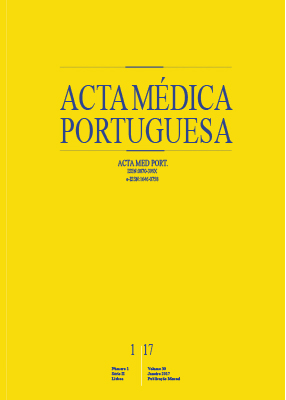Behavior Changes and Gait Unsteadiness: The Value of Imaging and Prompt Neurosurgical Intervention
DOI:
https://doi.org/10.20344/amp.7523Keywords:
Cognition Disorders, Gait Disorders, Neurologic, Hemangioma, Cavernous, Magnetic Resonance Imaging, Neurosurgical Procedures, Tomography, X-Ray Computed, VentriculostomyAbstract
Cavernous angiomas are central nervous system malformations. Most common manifestations are seizures and acute focal neurological deficits. We present a case report of a seventy-one year-old man with a two-month history of behavior changes, attention deficit and indifference followed by gait unsteadiness. Neuropsychological evaluation showed severe cognitive impairment and executive dysfunction. Head computed tomography depicted a supraventricular hydrocephaly. Magnetic resonance imaging revealed a small hemorrhage, contiguous to a mesencephalic cavernous angioma, obstructing the Sylvius aqueduct, causing secondary hydrocephalus. Four months after endoscopic ventriculocisternostomy, neuropsychological evaluation showed improvement and the patient regained autonomy. Parenchyma cavernous angiomas causing direct hemorrhage and subsequent obstruction of the Sylvian aqueduct are uncommon. Sub-acute behavior and mental state abnormalities are rare first manifestations of cavernous angioma and requires high clinical suspicion for its correct diagnosis. Magnetic resonance imaging evaluation is crucial in the detection of such patients as prompt neurosurgical intervention may substantially improve cognitive function.
Downloads
Downloads
Published
How to Cite
Issue
Section
License
All the articles published in the AMP are open access and comply with the requirements of funding agencies or academic institutions. The AMP is governed by the terms of the Creative Commons ‘Attribution – Non-Commercial Use - (CC-BY-NC)’ license, regarding the use by third parties.
It is the author’s responsibility to obtain approval for the reproduction of figures, tables, etc. from other publications.
Upon acceptance of an article for publication, the authors will be asked to complete the ICMJE “Copyright Liability and Copyright Sharing Statement “(http://www.actamedicaportuguesa.com/info/AMP-NormasPublicacao.pdf) and the “Declaration of Potential Conflicts of Interest” (http:// www.icmje.org/conflicts-of-interest). An e-mail will be sent to the corresponding author to acknowledge receipt of the manuscript.
After publication, the authors are authorised to make their articles available in repositories of their institutions of origin, as long as they always mention where they were published and according to the Creative Commons license.









